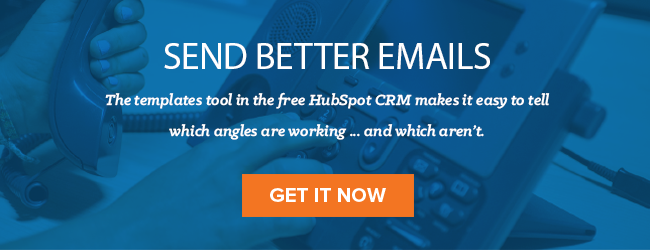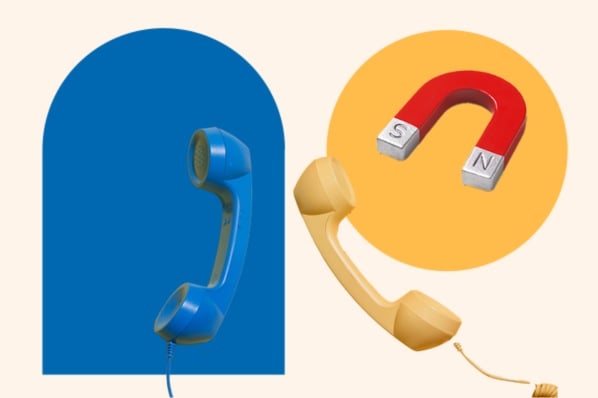- What is a PQL?
- PQL vs SQL: What’s the difference?
- How To Identify a PQL
- What is a product trial?
- Will PQLs work for my business?
- How To Make PQLs Work for You
For example, free trial products, like Intercom, offer an introductory, time-limited product experience. This helps users find value in the product before making a serious commitment.
PQL vs SQL: What’s the difference?
Both product qualified leads and sales qualified leads are frameworks sales teams use to identify leads who have the potential to be long-lasting customers. The difference lies in the way these people are picked.
A PQL is someone who has experienced a brand’s product through a free trial or freemium plan. This, however, doesn’t mean that someone who signs up for a free trial is automatically a PQL. To be a PQL, the person would have to complete some predefined tasks within the product — which are often determined by the marketer.
Every business has its own definition of a PQL, and the markers change as the product matures.
An SQL, on the other hand, is someone who has expressed enough interest in a company and its offers for the sales team to work on converting them from prospect to customer.
Usually, SQLs are a step closer to purchasing than marketing qualified leads (MQLs) — people who’ve engaged with a company’s marketing assets. To be considered an SQL, a lead has to be vetted by the marketing team to determine if they’re qualified to move down the sales funnel.
For example, a person may be considered an SQL when they start asking about product pricing and plans, filling out forms to request free quotes, and skipping product demos to speak directly with the sales team.
How to Identify a PQL
Generally, people have to go beyond just downloading a beta product or using a free trial to become PQLs. This is because some people sign up just for the free trial, and once the time is up, they never use the product again.
Because this term is flexible, you can create your own criteria to determine who a PQL is regarding your business model.
That being said, here are two popular ways sales teams determine their PQLs.
1. Measuring Product Engagement
It’s impossible to qualify a lead based on product usage if you don’t track product engagement. Once you start tracking product engagement, come up with a system where you can rank or score your users based on how much they use the core features of your product.
The higher a lead’s score, the higher the chances of them being PQLs and potential long-term users.
Pro tip: To know what to look out for, study your existing customers and identify what they have in common. That includes:
- The key features they use the most.
- What freemium customers are using your product for.
- Key demographic similarities.
This data, along with insights from your marketing, sales, and customer success teams, will help you set up a practical customer journey to determine your PQLs.
2. Measuring the Activation Rate During the Trial Period
The aim of free trials is to drive new users toward “activation.” Each product has a different activation point, but the term “activation” generally refers to the “aha moment” a new user gets after completing a series of actions.
These actions usually involve using your product’s main features to do simple tasks.
For example, Google Doc’s activation checklist looks like this:
- Create a document.
- Add a teammate.
- Share a document.
- Edit a document.
- Write a comment.
If a customer takes two of those steps, their activation rate is 20%. If they take 4, they are 80% to their activation point.
Pro tip: Not all accounts will be fully activated (100%) so you need to choose a value that a user has to reach before you can regard them as a PQL.
What is a product trial?
No matter the industry, few things tempt prospective customers more than giving away something for free. But the fact so many SaaS products today have a free trial is a double-edged sword.
A product trial gives prospects immediate access to a company’s product for a set period of time at little to no cost. It allows prospects to demo the product themselves and make a purchase decision in their own time.
On the one hand, it’s easier for people to sign up and try your product with a free trial. On the other hand, a lack of commitment means switching costs between products are lower. People can leave as fast as they joined.
To generate PQLs via a free product trial, it’s necessary to:
- Ensure they’re successful in that trial.
- Communicate quickly and proactively to facilitate a high trial conversion rate.
Will PQLs work for my business?
While many B2B SaaS businesses still rely on MQLs and SQLs to guide their marketing, PQLs are better and more effective for SaaS companies looking to expand their customer base. This is because a PQL is an actual user of your product.
PQLs have problems they think your product can solve, so they signed up for a free trial and got value during that period of time. Leads like this give you an idea of who your ideal users are, their pain points, and how they use your products to make their lives easier.
If you publish content (blog posts, videos, webinars, etc.) or run ads for your business, you may benefit from measuring MQLs and SQLs. Many people also make purchasing decisions when they consume a company’s marketing assets. This can work for both B2B and B2C companies.
How to Make PQLs Work for You
1. Find your PQLs.
First, find the in-product action (or series of actions) correlated most often with someone showing real buying intent.
For a product like Slack, it might be that a team on a free plan has sent 2,000 messages. Or it might be that a customer support team has replied to and closed 100 conversations.
These actions will differ for every company, but there’s an easy way to find yours. Ask yourself, what does a successful customer look like? What are they doing in your product?
Work backwards from that ideal customer, asking “How were they able to do that?” Follow these steps to identify the ultimate causes of success and you’ll find the actions that determine your PQLs.
2. Prioritize your PQLs.
In-product behavior is only one piece of the jigsaw and must balance with other factors to make sure your sales team spends time with the right PQLs.
HubSpot’s VP of Product, Christopher O’Donnell has identified four distinct types of product qualified leads:
- Free users who’ve hit a given PQL criteria.
- In-product hand raisers (i.e., users who have requested sales assistance).
- Users who’ve reached a limit in their free plans.
- Self-service users who’ve purchased without any sales involvement.
.jpg?width=1448&height=604&name=pql-diagram%20(1).jpg)
To understand these different PQLs take what you know people are doing in your product and enrich it with other data, including.
- Demographic Information. Look at the demographics of your most valuable customers and find commonalities. For example, if you only sell to a certain geographic location, you might remove any PQL falling outside the proper city, state, zip code, or country.
- Company Information. Use third-party data sources, such as Clearbit, to get rich information about your PQLs’ businesses. Are you more interested in B2B organizations or B2C organizations? If you’re a B2B organization, are organizations of a certain size, type, or industry more interested in your products?
By understanding who’s really interested in using your product right away and who’s just starting to kick the tires, it becomes easier to tailor the sales process to their exact needs.
3. Start converting your PQLs.
The secret to converting your PQLs is to send the right message to the right person at the right time based on their activity (or lack thereof). Don’t send a cookie-cutter series of messages blasted to everyone who’s signed up for a free trial on day one, day five, or day 14.
Here are three messages you can send right away to guide PQLs towards conversion.
When They’ve Hit a Usage Limit
When someone has reached the usage limits for your product, you should automatically trigger a message that outlines the increased value they’ll get from upgrading from a free trial.
Most of us want what we can’t have, so they’ll be open to an upgrade, provided they have a genuine need for more of your product in their lives.
See a sample message below.
“Hi Pete,
It looks like you’re getting organized with DropBag.
Unfortunately, you only have 2GB of space left in your plan. You can upgrade to our Pro Plan for just $5 a month and you’ll get an extra 1TB of space to keep your files in sync — and the first month is free!”
When They’re Heavily Using a Feature
Another effective trigger for converting a PQL is when your customers have achieved a milestone with your product, such as:
- Spending over a certain number of hours in your app.
- Accomplishing a certain number of tasks in your product.
- Logging in a certain number of times.
- Installing particular integrations or add-ons.
Use these events as opportunities to remind your customers about the value they’re getting from doing business with you and consider how to convert them now to take things even further.
For example, you can use the following message to demonstrate heavy account usage.
“Laura here, from account management. I see you send lots of messages between the hours of 9:00 p.m. and 11:00 p.m. your time, which seems tough on work/life balance.
I thought you might be interested in our Pro Plan, which lets you schedule messages in advance. Would you be interested in a free trial?”
When They’re Getting In-App Results
Your best PQLs are the ones who’ve passed one or more “success milestones” — the point at which they’ve received tangible value from your product. If you sell software for ecommerce stores, a milestone might be “Customer makes first sale.”
As your customers achieve various success milestones along their journey, their willingness to convert goes up. It’s up to you to recognize and take advantage of that.
For example, you can modify the template below.
“Hi Nancy, it looks like you’ve gotten your store live with a few products. It looks great!
If you haven’t already checked out your sales dashboard, this is a great place to start: [link to how-to resource].
Also, now that you’ve gotten your products live, you might be interested in our marketing automation tool to convert visitors into customers. Here’s more information on that: [insert link to landing page].
Is there anything else I can help with at this stage?”
The Bottom Line? PQLs Work
By flipping your funnel 180 degrees and starting with product adoption, your sales and marketing teams will spend time and energy with those leads that have raised their hands, are engaging with the product, and will end up becoming happier, more valuable customers.
Sales Qualification




![How I use BANT to qualify prospects [+ expert tips]](https://53.fs1.hubspotusercontent-na1.net/hubfs/53/bant-questions-6606f7b6c0d9e.webp)



![21 Signs Your Buyer Is a Poor Fit [Sales Process Checklist], According to HubSpot's Former Sales Director](https://53.fs1.hubspotusercontent-na1.net/hubfs/53/Bad%20fit%20checklist.jpg)



